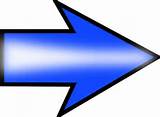Lawrence
may not - in fact did not - intend it as such, but that
is what it turned out to be.
The King and Empire Alliance - and particularly its secret-army
inner-core, "the garage" - was, by any definition,
a fascist organisation. (No wonder the Friend family are
so reluctant to be associated with it, even though of
course they were up to their necks in it.)
The Alliance's leadership - and in particular Jack Scott
- acknowledged its anti-democratic and illegal nature
("red-hot treason" Callcott called it), as did
Lawrence himself. The following exchange in Kangaroo
gets as close to classical fascism as is possible without
the traditional salute and click of the heels:
|
"…we
jolly well know you can't keep a country going on
the vote-catching system" [said Callcott]
"…ideal democratic liberty is an exploded
ideal" [Somers responded, adding:] "You've
got to have wisdom and authority somewhere, and
you can't get it out of any further democracy."
|
Scott
and Rosenthal - together with Herbert Brookes, Brigadier-General
Macarthur-Onslow, Colonel Hinton, Sir Henry Braddon, George
Augustine Taylor, and all the others along the line (including
Gerald Hum, members of the Friend family, and probably
most of the Kings School's old-boys), were prospective
bedfellows with people like Eric Campbell, Sir Oswald
Mosley, and, had it come to it, probably Marshal Pétain
too.
Humphrey McQueen's "mad psychiatrist", Bill
Richards, believed that there was in Australia in the
years running up to WW2 a Vichy element that was prepared
to surrender Australia below the "Brisbane Line"
to the invading Japanese [see my 21/8/76 entry in my Secret
Army Research notes].
In WW2 Jack Scott was named as a possible Japanese collaborator
in a prosecution involving PR "Inky" Stephnsen,
who was interned in 1940 because of his association with
an Australian fascist group, the Australia First Movement.
(Somewhat ironically, it was Stephensen who gave Kangaroo
an almost "rave review" in a newspaper in Brisbane
1924, and who later in London, when he ran the Franfrolico
Press, published a book of Lawrence's paintings. Today,
one wonders which part of the novel "Inky" most
admired.)
